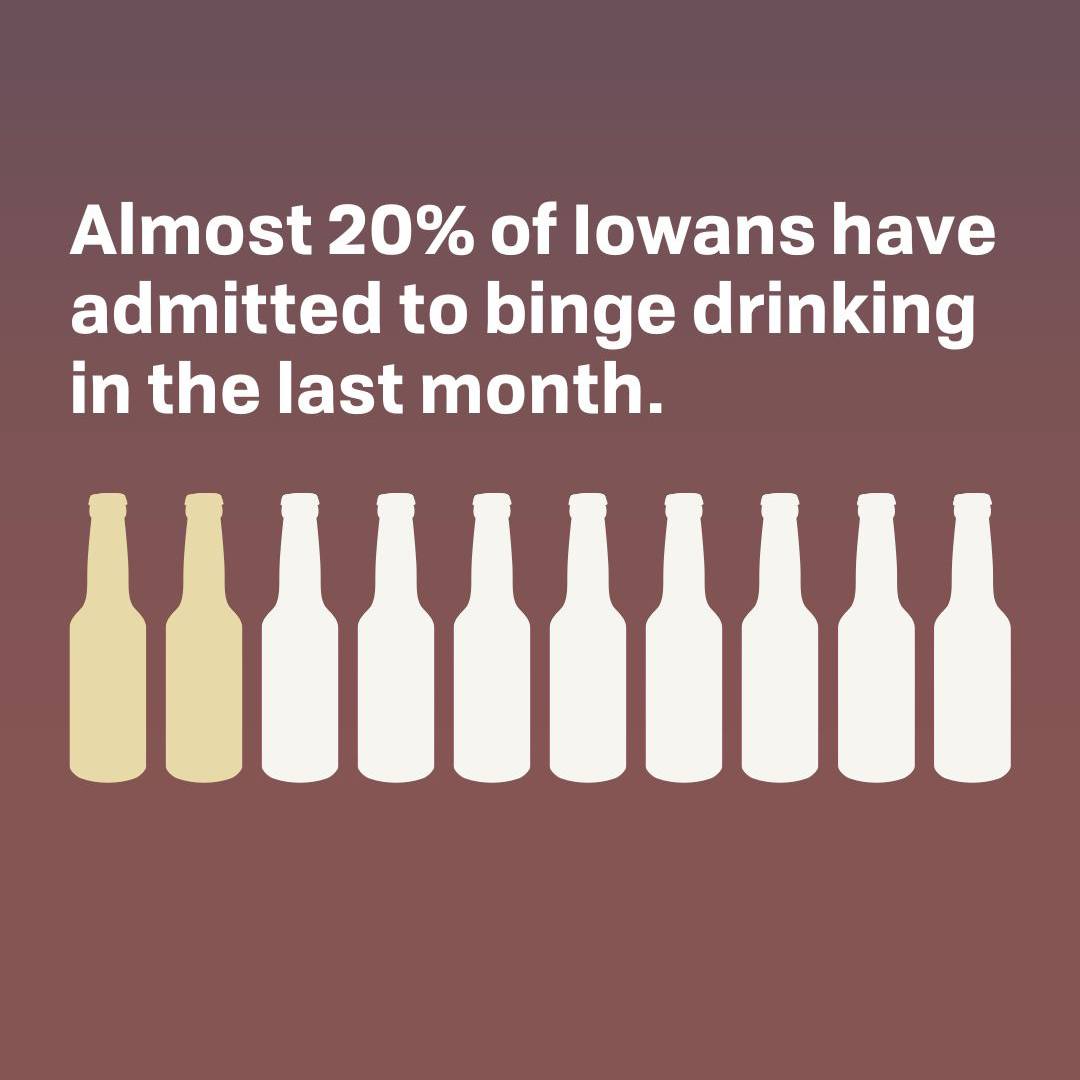 Published May 9, 2024
Published May 9, 2024
Binge drinking can lead to serious injuries and diseases. It can also lead to a higher risk of alcohol use disorder.
Binge drinking is defined as:
- consuming 5 or more drinks on an occasion for men
- consuming 4 or more drinks on an occasion for women
According to the CDC, 21.8 percent of adult Iowans reported binge drinking in the last month. This is higher than the national average of 17 percent1.
Only Montana (22.9%) had a higher rate of binge drinking1.
Excessive drinking increases the risk of experiencing2:
- High blood pressure, heart disease, stroke, liver disease, and digestive problems.
- Cancer of the breast, mouth, throat, esophagus, voice box, liver, colon, and rectum.
- Weakening of the immune system, increasing the chances of getting sick.
- Learning and memory problems, including dementia and poor school performance.
- Mental health problems, including depression and anxiety.
- Social problems, including family problems, job-related problems, and unemployment.
- Alcohol use disorders, or alcohol dependence.
Choosing not to drink, or drinking in moderation is recommended by the Dietary Guidelines for Americans. Moderations is defined as 2 drinks or less in a day for men or 1 drink or less in a day for women3.
If you have questions or concerns about alcohol use or binge drinking, we can help. Our knowledgeable, compassionate counselors are available 24/7 to support you or a loved one. Get started today.
Sources
- Data on Excessive Drinking | CDC. Centers for Disease Control and Prevention.
- Alcohol and Cancer. Centers for Disease Control and Prevention.
- 2020 – 2025 Dietary Guidelines for Americans, U.S. Department of Agriculture and U.S. Department of Health and Human Services.
